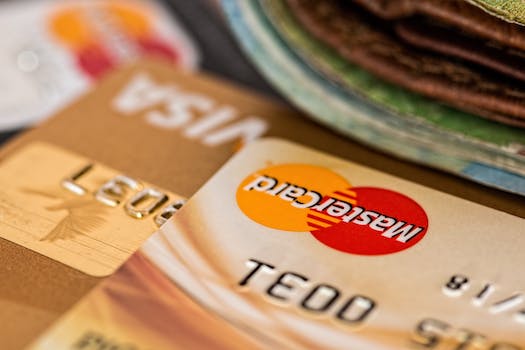How To Save Money With Electricity
Introduction

Introduction: Saving money on electricity is a great way to reduce your monthly expenses and help the environment. By making a few simple changes to your daily habits and home appliances, you can significantly reduce your electricity bill. In this article, we will discuss some effective ways to save money with electricity.
10 Simple Ways to Reduce Your Electricity Bill
Electricity is an essential part of our daily lives. We use it to power our homes, charge our devices, and keep our appliances running. However, with the increasing cost of electricity, it’s becoming more important than ever to find ways to save money on our electricity bills. In this article, we’ll explore 10 simple ways to reduce your electricity bill and save money.
1. Turn off lights and appliances when not in use
One of the easiest ways to save money on your electricity bill is to turn off lights and appliances when you’re not using them. This includes turning off lights when you leave a room, unplugging chargers when they’re not in use, and turning off your computer when you’re not using it.
2. Use energy-efficient light bulbs
Energy-efficient light bulbs, such as LED bulbs, use less energy than traditional incandescent bulbs. They also last longer, which means you’ll save money on replacement bulbs over time.
3. Use a programmable thermostat
A programmable thermostat allows you to set the temperature in your home based on your schedule. This means you can lower the temperature when you’re not home or sleeping, which can save you money on your heating bill.
4. Seal air leaks
Air leaks in your home can cause your heating and cooling system to work harder than it needs to. By sealing air leaks, you can reduce the amount of energy needed to heat or cool your home, which can save you money on your electricity bill.
5. Use a power strip
Using a power strip can help you save money on your electricity bill by allowing you to turn off multiple appliances at once. This is especially useful for electronics that use standby power, such as televisions and computers.
6. Use natural light
Using natural light instead of artificial light can help you save money on your electricity bill. Open your curtains or blinds during the day to let in natural light, and consider using task lighting instead of overhead lighting.
7. Use a clothesline
Using a clothesline to dry your clothes instead of a dryer can save you money on your electricity bill. Not only does it use less energy, but it also extends the life of your clothes.
8. Use energy-efficient appliances
Energy-efficient appliances use less energy than traditional appliances, which can save you money on your electricity bill over time. When shopping for appliances, look for the Energy Star label, which indicates that the appliance meets energy efficiency standards.
9. Use a low-flow showerhead
A low-flow showerhead can help you save money on your water and electricity bills by reducing the amount of water you use. This means your water heater won’t have to work as hard to heat the water, which can save you money on your electricity bill.
10. Unplug appliances when not in use
Even when appliances are turned off, they can still use standby power. By unplugging appliances when they’re not in use, you can save money on your electricity bill and reduce your energy consumption.
In conclusion, there are many simple ways to reduce your electricity bill and save money. By turning off lights and appliances when not in use, using energy-efficient light bulbs and appliances, and sealing air leaks, you can reduce your energy consumption and save money on your electricity bill. With a little effort and some small changes to your daily routine, you can make a big difference in your energy consumption and your wallet.
The Benefits of Switching to LED Light Bulbs
Electricity is a necessity in our daily lives, but it can also be a significant expense. With the rising cost of energy, it’s essential to find ways to save money on your electricity bill. One of the most effective ways to do this is by switching to LED light bulbs.
LED light bulbs are a more energy-efficient alternative to traditional incandescent bulbs. They use up to 80% less energy and last up to 25 times longer than incandescent bulbs. This means that not only will you save money on your electricity bill, but you’ll also save money on replacement bulbs.
LED light bulbs also have a lower heat output than incandescent bulbs, which means they’re safer to use. They don’t get as hot, so there’s less risk of fire or burns. This makes them an excellent choice for homes with children or pets.
Another benefit of LED light bulbs is that they’re more environmentally friendly. They don’t contain any hazardous materials, such as mercury, which can be harmful to the environment. They also produce less carbon dioxide emissions, which helps to reduce your carbon footprint.
LED light bulbs come in a variety of shapes and sizes, so you can find the perfect bulb for your needs. They’re available in different colors, including warm white, cool white, and daylight. You can also choose from different brightness levels, from dim to bright.
When you switch to LED light bulbs, you’ll notice an immediate difference in your electricity bill. You’ll save money on your energy costs, and you’ll also be doing your part to help the environment. LED light bulbs are an investment that will pay off in the long run.
To get the most out of your LED light bulbs, it’s essential to choose the right bulb for your needs. Consider the brightness level, color temperature, and size of the bulb. You’ll also want to make sure that the bulb is compatible with your fixtures.
When you’re ready to make the switch to LED light bulbs, there are a few things to keep in mind. First, you’ll need to replace all of your existing bulbs with LED bulbs. This may seem like a significant expense upfront, but it will pay off in the long run.
You’ll also want to make sure that you’re using the right type of LED bulb for each fixture. Some fixtures require a specific type of bulb, so it’s essential to read the manufacturer’s instructions before making a purchase.
Finally, it’s important to remember that LED light bulbs are not all created equal. Some brands may be more energy-efficient than others, so it’s essential to do your research before making a purchase. Look for bulbs that are Energy Star certified, as these have been tested and proven to be energy-efficient.
In conclusion, switching to LED light bulbs is an excellent way to save money on your electricity bill. They’re more energy-efficient, last longer, and are safer to use than traditional incandescent bulbs. They’re also more environmentally friendly, which is a bonus for those who are concerned about their carbon footprint. When you’re ready to make the switch, be sure to choose the right bulb for your needs and do your research to find the most energy-efficient option. With LED light bulbs, you’ll be able to enjoy a brighter, more energy-efficient home while saving money on your electricity bill.
How to Choose Energy-Efficient Appliances for Your Home
As we become more aware of the impact of our actions on the environment, many of us are looking for ways to reduce our carbon footprint and save money at the same time. One of the easiest ways to do this is by choosing energy-efficient appliances for our homes.
When it comes to choosing energy-efficient appliances, there are a few things to keep in mind. First, look for appliances that have earned the ENERGY STAR label. This label is given to appliances that meet strict energy efficiency guidelines set by the U.S. Environmental Protection Agency. Appliances with the ENERGY STAR label use less energy than standard models, which can save you money on your energy bills over time.
Another thing to consider when choosing energy-efficient appliances is the size of the appliance. Generally, smaller appliances use less energy than larger ones. So, if you don’t need a large refrigerator or washing machine, consider downsizing to a smaller model. This can not only save you money on your energy bills, but it can also save you money on the upfront cost of the appliance.
When it comes to refrigerators, there are a few other things to keep in mind. Look for models with a top-mounted freezer, as these tend to be more energy-efficient than models with a side-by-side or bottom-mounted freezer. Additionally, consider the size of the refrigerator. A larger refrigerator may seem like a good idea, but if you don’t need all that space, you’ll be wasting energy and money.
When it comes to washing machines, front-loading models tend to be more energy-efficient than top-loading models. This is because front-loading models use less water and energy to wash clothes. Additionally, look for models with a high spin speed, as these can help reduce the amount of time it takes to dry your clothes, which can save you money on your energy bills.
When it comes to dishwashers, look for models with a delay start feature. This allows you to set the dishwasher to start at a later time, when energy rates may be lower. Additionally, look for models with a high energy efficiency rating, as these tend to use less water and energy than standard models.
Finally, when it comes to choosing energy-efficient appliances, don’t forget about small appliances like toasters, coffee makers, and microwaves. Look for models with an automatic shut-off feature, as these can help reduce energy waste. Additionally, consider the size of the appliance. A smaller toaster or coffee maker may be all you need, and it will use less energy than a larger model.
In conclusion, choosing energy-efficient appliances is a great way to save money on your energy bills and reduce your carbon footprint. When choosing appliances, look for models with the ENERGY STAR label, consider the size of the appliance, and look for features like a delay start or automatic shut-off. By making these small changes, you can make a big difference in your energy usage and your wallet.
The Importance of Proper Insulation and Weather Stripping
Electricity is a necessity in our daily lives, but it can also be a significant expense. With the cost of electricity on the rise, it’s essential to find ways to save money on your energy bills. One of the most effective ways to do this is by ensuring that your home is properly insulated and weather-stripped.
Proper insulation and weather stripping can help keep your home warm in the winter and cool in the summer. This means that your heating and cooling systems won’t have to work as hard to maintain a comfortable temperature, which can lead to significant savings on your energy bills.
Insulation is the material that is used to prevent heat transfer between the inside and outside of your home. It is typically installed in the walls, floors, and ceilings of your home. The most common types of insulation are fiberglass, cellulose, and spray foam.
Fiberglass insulation is the most common type of insulation and is made from tiny glass fibers. It is relatively inexpensive and easy to install, but it can be less effective than other types of insulation.
Cellulose insulation is made from recycled paper and is blown into the walls and ceilings of your home. It is more effective than fiberglass insulation and can help reduce your energy bills.
Spray foam insulation is the most effective type of insulation and is typically used in new construction. It is more expensive than other types of insulation but can provide significant savings on your energy bills.
Weather stripping is the material that is used to seal the gaps around doors and windows. It is typically made from rubber or foam and can help prevent drafts and air leaks.
To ensure that your home is properly insulated and weather-stripped, it’s important to have a professional inspect your home. They can identify areas where insulation and weather stripping are needed and recommend the best materials for your home.
In addition to proper insulation and weather stripping, there are other ways to save money on your energy bills. One of the most effective ways is to use energy-efficient appliances and light bulbs. Energy-efficient appliances use less energy than traditional appliances and can help reduce your energy bills.
LED light bulbs are also more energy-efficient than traditional incandescent bulbs and can last up to 25 times longer. They may be more expensive upfront, but they can provide significant savings over time.
Another way to save money on your energy bills is to use a programmable thermostat. A programmable thermostat allows you to set the temperature in your home based on your schedule. This means that you can lower the temperature when you’re not home and raise it when you are, which can lead to significant savings on your energy bills.
In conclusion, proper insulation and weather stripping are essential for saving money on your energy bills. They can help keep your home warm in the winter and cool in the summer, which means that your heating and cooling systems won’t have to work as hard. In addition to proper insulation and weather stripping, using energy-efficient appliances and light bulbs and a programmable thermostat can also help reduce your energy bills. By taking these steps, you can save money on your energy bills and help protect the environment.
Smart Home Technology: Saving Money and Energy
As the cost of living continues to rise, many people are looking for ways to save money. One area where significant savings can be made is with electricity. With the rise of smart home technology, it’s now easier than ever to reduce your energy consumption and save money on your electricity bills.
One of the most effective ways to save money with electricity is to invest in smart home technology. Smart home devices, such as smart thermostats, smart lighting, and smart plugs, allow you to control your energy consumption from your smartphone or tablet. This means you can turn off lights and appliances when you’re not using them, adjust your thermostat remotely, and even set schedules for your devices to turn on and off automatically.
Another way to save money with electricity is to switch to energy-efficient appliances. Energy-efficient appliances use less electricity than their traditional counterparts, which means you’ll save money on your electricity bills over time. Look for appliances with the Energy Star label, which indicates that they meet strict energy efficiency guidelines set by the U.S. Environmental Protection Agency.
In addition to investing in smart home technology and energy-efficient appliances, there are several other ways to save money with electricity. One of the simplest ways is to turn off lights and appliances when you’re not using them. This may seem like a small thing, but it can add up to significant savings over time.
Another way to save money with electricity is to use natural light whenever possible. Open your curtains and blinds during the day to let in natural light, and turn off lights in rooms that aren’t being used. This not only saves money on your electricity bills, but it also has the added benefit of improving your mood and productivity.
Finally, consider investing in renewable energy sources, such as solar panels or wind turbines. While the initial cost of these technologies can be high, they can provide significant savings over time. In addition, many states offer tax incentives and rebates for homeowners who install renewable energy systems.
In conclusion, there are many ways to save money with electricity. By investing in smart home technology, energy-efficient appliances, and renewable energy sources, you can significantly reduce your energy consumption and save money on your electricity bills. Additionally, simple changes such as turning off lights and appliances when you’re not using them and using natural light whenever possible can also make a big difference. With a little effort and investment, you can enjoy the benefits of a more energy-efficient home and a lower electricity bill.
Conclusion
Conclusion: Saving money with electricity is possible by implementing simple changes in our daily habits and using energy-efficient appliances. By turning off lights and electronics when not in use, using natural light, adjusting the thermostat, and upgrading to energy-efficient appliances, we can reduce our electricity bills and contribute to a more sustainable future.







